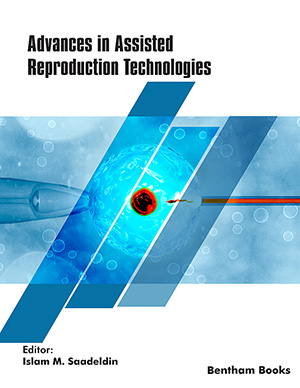[1]
Mckusick, V.A. Mendelian inheritance in man and its online version, OMIM. Am. J. Hum. Genet., 2007, 80(4), 588-604.
[2]
Botstein, D.; Risch, N. Discovering genotypes underlying human phenotypes: past successes for mendelian disease, future approaches for complex disease. Nat. Genet., 2003, 33(2), 228-237.
[3]
Oti, M.; Brunner, H. The modular nature of genetic diseases. Clin. Genet., 2007, 71(1), 1-11.
[4]
Wood, L.D.; Parsons, D.W.; Jones, S.; Lin, J.; Sjöblom, T.; Leary, R.J.; Shen, D.; Boca, S.M.; Barber, T.; Ptak, J. The genomic landscapes of human breast and colorectal cancers. Science, 2007, 318(5853), 1108-1113.
[5]
Lim, J.; Hao, T.; Shaw, C.; Patel, A.J.; Szabó, G.; Rual, J.F.; Fisk, C.J.; Li, N.; Smolyar, A.; Hill, D.E. A protein-protein interaction network for human inherited ataxias and disorders of Purkinje cell degeneration. Cell, 2006, 125(4), 801-814.
[6]
Lage, K.; Karlberg, E.O.; Størling, Z.M.; Pedersen, A.G.; Rigina, O.; Hinsby, A.M.; Tümer, Z.; Pociot, F.; Tommerup, N.; Moreau, Y. A human phenome-interactome network of protein complexes implicated in genetic disorders. Nat. Biotechnol., 2007, 25(3), 309-316.
[7]
Wijmenga, C.; Franke, L.H.; Egmont-Petersen, M. Comparison of a functional human gene network with a network reconstructed by applying genetical genomics; , 2019. In press
[8]
Wu, X.B.; Jiang, R.; Zhang, M.Q.; Li, S. Network-based global inference of human disease genes. Mol. Syst. Biol., 2008, 4(1), 189.
[9]
Köhler, S.; Bauer, S.; Horn, D.; Robinson, P.N. Walking the interactome for prioritization of candidate disease genes. Am. J. Hum. Genet., 2008, 82(4), 949-958.
[10]
Vanunu, O.; Magger, O.; Ruppin, E.; Shlomi, T.; Sharan, R. Associating genes and protein complexes with disease via network propagation. PLOS Comput. Biol., 2010, 6(1)e1000641
[15]
Benson, A.R.; Gleich, D.F.; Leskovec, J. Higher-order organization of complex networks. Science, 2016, 353(6295), 163-166.
[16]
Stoynoff, S. Network motifs: simple building blocks of complex networks. Science, 2002, 298(5594), 824-827.
[17]
Paranjape, A.; Benson, A.R.; Leskovec, J. Motifs in temporal networks. In 17th Proc. Tenth ACM Int. Conf. Web Search Data Mining, New York, NY, USA2017, pp. 601-610.
[18]
Leskovec, J.; Benson, A.R.; Gleich, D.F. Higher-order organization of complex networks. Science, 2016, 353(8), 163-166.
[19]
Borotkanics, R.; Lehmann, H. Network motifs that recur across species, including gene regulatory and protein-protein interaction networks. Arch. Toxicol., 2015, 89(4), 489-499.
[20]
Tsourakakis, C.E.; Pachocki, J.; Mitzenmacher, M. Scalable motif-aware graph clustering. In Proc. 26th Int. World Wide Web Conf. Committe, 2017, pp. 1451-1460.
[21]
Albieri, V.; Didelez, V. Comparison of statistical methods for finding network motifs. Stat. Appl. Genet. Mol. Biol., 2015, 13(4), 403-422.
[22]
Cao, J.; Lu, X.X.; Li, Y.; Zhu, L.Q.; Yang, C.; Ou, C.; Tang, Y.P. Applying gene set enrichment analysis and meta-analysis to screen key genes controlling the development and progression of hepatic carcinoma. World Chin. J. Digestology, 2012, 20(9), 754-758.
[23]
Huang, D.L.; Zou, J.J.; Zhang, J.R. Bioinformatics analysis of the key risk genes in lung cancer. China J. Cancer Prev. Treat., 2012, 39(23), 1890-1895.


























